This Critical Analysis was first published on the Titans Space Industries website on July 21, 2022.
The full analysis has been reproduced below without some (update) edits.
The author, Neal S. Lachman, is Editor at Large of BizzInfoHub. His primary job is CEO of Titans Universe and Titans Space Industries.
From the same author:
Table of Content
Introduction
Humanity achieved something extraordinary exactly 53 years to this day in 1969, and then again in the three following years; something that our ancestors have been dreaming about since the dawn of humanity: landing humans on our Moon.
Yes, the moon landings were real. It's 2022, and a substantial number of people still believe the moon landings were fake. Discovery Channel dedicated an entire (six part) series to the “Truth behind the Moon landings” to research whether or not claims by conspiracy theorists were based in reality or just misinformation and ignorance.
In the more than fifty years since our first moon landings, rocket technology has vastly improved. We have a million-fold better computing power, we have near-full automation abilities, and we have access to better materials and technologies, including robotics and modeling.
In the recent few years, Elon Musk's SpaceX and Jeff Bezos' Blue Origin have proven reusability of rocket boosters, and things will only get better from here. Musk even hopes to send armadas of Starships to Mars – with humans. It seems like there is no stopping of this train – or should I say, rocket?
I think rockets and relevant technologies and materials will indeed improve, but there is a far better way to travel to and in space. I'll get to that in a bit. Let's first understand the shortcomings of rocket systems, which we'll establish as one researcher stated, “the most hazardous method of transportation ever invented.”
Escaping Earth
Rockets are currently the only way to send humans to space, and these rockets currently have only one type of fuel/propellant: chemical. That's it. Ion engine (a form of electric propulsion) spacecraft aren't able to carry humans (as of yet).
Despite the many rocket launches today, only twenty-four people have ever reached escape velocity: the crews of the Apollo missions to the Moon. There was no real reason to do so again for the last 50+ years, and there was no equivalent powerful rocket launch vehicle system like we had with the beautiful Saturn V that launched the Apollo missions (1968-1972).
Escape velocity is the required speed of a spacecraft to leave the surface of a celestial body without needing other forms of propulsion/acceleration. Whether it is a huge rocket like the Saturn V, a cannon ball, or a football, the escape velocity is the same for everything. Earth's escape velocity is about 11.2 kilometers per second or 40,000 kilometers per hour, the equivalent of traveling from Earth's North Pole to the South Pole in just over twenty minutes. Once you've reached escape velocity, the outward trajectory, due to sufficient centrifugal force, means that you will keep on going farther and farther into space, and you won't be pulled back to earth to fall back on or orbit Earth.
Fun fact: even though the Moon is 400,000 kilometers away from Earth, it would be easier to send a rocket from a Lunar base into Low Earth Orbit than from the surface of Earth. Why? Because Earth's atmosphere and gravitational force is very difficult to escape. Something we've only been successfully doing since a mere seven decades.
Orbiting Earth
There is a big difference between escaping Earth's gravity force, and orbiting Earth.
The reason why only twenty-four people have reached Earth's escape velocity is that all non-Apollo crewed missions occurred in so-called Low Earth Orbit (LEO). Even the International Space Station is orbiting Earth at only around 400 kilometers altitude, and again, the only way to reach space today is with rockets.
The International Astronautics Federation accepts 100 km (the Karman Line) as the border where you'll be officially in space, and as such, become an Astronaut. NASA keeps 80 kilometers as the border between Earth and Space.
When you launch a rocket from Earth, you need to set it up to escape the atmosphere, but because all non-Apollo crewed missions were meant to be in low Earth orbit, no escape velocity was needed.
Nevertheless, escaping Earth's atmosphere, where 99% of it exists below the stratosphere at ~30 kilometers altitude, is done by brute force, which is why a rocket needs tons of fuel. That's also why all current rocket designs have a multi-stage/engine system, usually called stage 1 or first stage, and most have so-called rocket boosters.
Depending on the frequency and thus cost-savings estimated by a rocket operator like Blue Origin or SpaceX, reusability of the first stage may be the way forward. The empty boosters or first stage detaches soon after reaching space and returns to Earth while the second stage continues its journey into space. Systems like NASA's SLS (see below), are expandable – meaning none of the stages will be reused.
Even at ~420 kilometers altitude, the ISS is still being pulled down to Earth due to centripetal force. However, the station doesn't fall back to Earth because it is moving forward in Earth's orbit at the same speed that it's falling to Earth, keeping it at a near-constant motion so that it's practically never going to fall down to Earth.
Fun fact: Because of the gravitational pull and continuous collision with gas particles (even at 400+ km altitude), the ISS still loses up to 100 meters of altitude every day, for which it has to fire its thrusters to compensate for the lost altitude – usually once a month.
Clearly, a rocket launch is a sequence of controlled explosions. That sounds really cool, but what makes rockets awesome, fascinating, and powerful to see in action, also makes it most vulnerable, highly inefficient, and utterly dangerous.
Chemical rockets are inherently risky and dangerous, and while there are many improvements planned, the very violent nature of rockets on Earth is and will always be unavoidable. This is true for launches, but also for returns, due to the huge risks and equally violent nature of re-entry, of which the February 1 2003 disaster with the Space Shuttle Columbia is a sad reminder.
Reentry
Returning from space, usually called reentry, is a risk for space travelers (due to the heat inside the returning vehicle) as well as for people on Earth (due to falling debris of satellites etc.). Like with most risky endeavors, regulators have conducted casualty risk assessments of reentry.
Just recently, researchers published a paper with a very telling title: “Unnecessary risks created by uncontrolled rocket reentries.”
The researchers state:
In 2020, over 60% of launches to low Earth orbit resulted in a rocket body being abandoned in orbit. Remaining in orbit for days, months or even years, these large objects pose a collision hazard for operational satellites. They can also, in the event of a collision or an explosion of residual fuel, fragment into thousands of smaller but still potentially destructive pieces of space debris, creating even more hazards for satellites. There is yet another risk, which is the focus of this paper: when intact stages return to Earth, a substantial fraction of their mass survives the heat of atmospheric reentry as debris. Many of the surviving pieces are potentially lethal, posing serious risks on land, at sea and to people in aeroplanes.
However, the reentry risks I want to point out are in specific terms.
In a 2014 essay, “The Risks and Dangers of Space Exploration,” NASA explains:
A launch can be affected by many dangers, including highly explosive fuel, poor weather, malfunctioning equipment, human error and even birds. Once in flight, the spacecraft can be affected by floating debris, meteoroids and electromagnetic radiation (coronal mass ejections—or, solar flares). Re-entering the Earth's atmosphere also has it's dangers (as proven by the Columbia disaster). The reentry path the spacecraft takes must be perfect, otherwise, if it is too shallow—it will bounce off the atmosphere, and if it is too steep, it will burn up.
Now, try to imagine… a bunch of astronauts accidently bouncing off the atmosphere, on a trajectory to nowhere, lost in space. It may happen some time in the future, but let's hope not. No matter how advanced rockets will be, or further improved materials will become, there will always be risks to returning to Earth due to its thick, unforgiving atmosphere.
NASA's Space Shuttle had a narrow corridor for its reentry path, but still enough to act like an airplane once entering Earth's atmosphere. The crewed capsuled or pods that you see landing during Blue Origin, SpaceX, Soyuz, or Apollo missions have a much steeper descent, and more dangerous. Both systems have to deal with the intense heat generated and the many accompanying dangers during reentry.
We accept those risks today, because we have no alternatives. Something my team and I are working on solving for once and forever. We'll get to that in a bit.
Environmental Pollution
In a recent (February 2022) study titled “Impact of Rocket Launch and Space Debris Air Pollutant Emissions on Stratospheric Ozone and Global Climate” researchers state:
It is imperative that we understand the current and future risks to Earth's atmosphere posed by pollution from rocket launches and ablation of reusable and discarded rocket parts and historical debris. Rockets, unlike other anthropogenic pollution sources, emit gaseous and solid chemicals directly into the up-per atmosphere…
We find that loss of ozone due to current rockets is small, but that routine space tourism launches may undermine progress made by the Montreal Protocol in reversing ozone depletion in the Arctic springtime upper stratosphere. The black carbon (or soot) particles from rockets are also of great concern, as these are almost five hundred times more efficient at warming the atmosphere than all other sources of soot combined. These findings demonstrate an urgent need to develop environmental regulation to mitigate damage from this rapidly growing industry.
The research paper has not been peer-reviewed yet, but the findings are there for everyone to see. The problem will exacerbate once tens or hundreds or even thousands of rockets start taking off from sites all over the world. It will become an environmental disaster beyond repair.
Dangers
As stated before, the rockets we have today are costly, loud, dangerous, full of risks, and rife of limitations.
In his 2014 book, “Terrestrial And Extraterrestrial Space Dangers: Outer Space Perils, Rocket Risks And The Health Consequences Of The Space Environment”, Dirk C. Gibson explained the inherent dangers associated with rocket transportation, and revealed that rockets are the most hazardous mode of transportation ever invented.
Gibson dedicated an entire chapter on Rocket Risk Factors. He cites the landmark space tourism study conducted in 1999 by the Space Transportation Association and NASA.
Explosions, caused by the uncontrolled combustion of propellants, may produce a blast wave with the potential of causing damage by crushing forces and winds. Debris, made up of vehicle fragments, that may land upon structures or populated areas, and fires, where the uncontrolled combustion of propellants results in heat, or thermal radiation, must be controlled, in the aftermath of an accident where a vehicle's composite structure or its cargo may be consumed by a fire, a toxic vapor hazard may still occur.
Rockets as Space Vehicles: inefficient, dangerous, and costly
As explained, and as you may be well aware, rockets are currently the only way to escape Earth's atmosphere, and to go to the Moon and beyond. It's an awful proposition due to some well known limitations, the most famous one known as “The Tyranny of the Rocket Equation”.
NASA's Space Shuttle flight engineer Don Pettit provided the best summary of this equation, which was first coined in 1903 by Russian scientist Konstantin Tsoilkovsky who applied Newton's Third Law to rockets – a technology that wasn't even available in the real world.
Pettit explains:
Tyranny is a human trait that we sometimes project onto Nature. This projection is a form of rationalization, perhaps a means to cope with matters that we cannot control. Such is the case when we invent machines to free us from the bounds of Earth, affecting our escape into space. If we want to expand into the solar system, this tyranny must somehow be deposed.
Rockets are momentum machines. They spew gas out of a nozzle at high velocity causing the nozzle and the rocket attached to it to move in the opposite direction. Isaac Newton correctly defined the mathematics for this exchange of momentum in 1687. Conservation of momentum applied to a rocket was first done by Russian visionary and scientist Konstantin Tsiolkovsky in 1903. All our rockets are governed by Tsiolkovsky's rocket equation.
The rocket equation contains three variables. Given any two of these, the third becomes cast in stone. Hope, wishing, or tantrums cannot alter this result. Although a momentum balance, these variables can be cast as energies. They are the energy expenditure against gravity (often called delta V or the change in rocket velocity), the energy available in your rocket propellant (often called exhaust velocity or specific impulse), and the propellant mass fraction (how much propellant you need compared to the total rocket mass).
Imagine a technology that has an equation at its core with the term tyranny in it. Scary, right? But while rockets are inherently dangerous vehicles, the term concerns the level of difficulty and complexity.
Now consider the backwardness of our thinking and technological prowess anno 2022. The Apollo missions happened 50+ years ago, and to go to the Moon again in the 2020s, NASA gave the aerospace industry a huge opportunity: the Space Launch System (SLS).
NASA's Space Launch System (SLS)
The SLS is meant to be the successor of the Space Shuttle, but while the space shuttle was confined to Low Earth Orbit, the SLS has to be able to do deep space missions, including to the Moon and eventually to Mars.
Before going to the industry's most aggressive players, SpaceX, and its delayed competitor, Blue Origin, let's quickly consider the issues concerning SLS.
Wikipedia lists the sixteen times the planned first launch of SLS was delayed since 2016. Some delays were political, but most were practical. It's a hell of a job, literally.
Wikipedia cites a 2019 letter from WH OMB:
… a letter from the White House Office of Management and Budget (OMB) to the Senate Appropriations Committee in October 2019 revealed that SLS's total cost to the taxpayer was estimated at “over $2 billion” per launch after development is complete; said development has cost $23 billion in 2021 dollars
And
In November 2021, a new NASA Office of Inspector General audit was released, which estimated that, at least for the first four launches of SLS, the per-launch production and operating costs would be $2.2 billion for SLS, plus $568 million for Exploration Ground Systems. Additionally, since the first four missions are under the Artemis program, the payload would cost $1 billion for Orion and $300 million for the ESA service module.
The SLS, while an awesome sight to behold, is a train-wreck in the making, financially and operationally.
Blue Origin and Blue Moon
Blue Origin has long been delayed in its mission to fly humans into orbit. According to a 2008 FlightGlobal article by Rob Coppinger, Blue Origin was planning to fly uncrewed in 2011 and crewed in 2012.
The first flight in reality was almost 10 years later than planned, in July 2021 with the Blue Origin NS-16 Mission. That's okay, groundbreaking events take time and delays are commonly expected.
In terms of Moon missions, not much is known beyond the fact that Jeff Bezos unveiled the Blue Moon lander in 2019, and that the lander will use the in-development BE-7 engine, which was test-fired in June 2019.
In terms of its more powerful engine, the BE-4, which is still being developed and is marred in chaos, Wikipedia summarizes it best:
… [B]y August 2021 it had become clear, and publicly so, that the engine program is in trouble, and qualification testing was still not yet complete. The first flight test of the new engine is now expected no earlier than 2022 on the Vulcan rocket, and much later on Blue's own New Glenn. The engine is running four years behind schedule, and Blue has experienced a variety of problems, both technical and managerial. Flight engines will not be delivered to ULA before late 2021, and perhaps not until early 2022. Moreover, the business relationship with ULA has deteriorated, in part because Blue tried to renegotiate for a higher price for the BE-4 engines in 2017 than had been agreed to in 2014.
The ULA mentioned above is a 2006 joint venture between Lockheed Martin Space and Boeing Defense, Space & Security. They have no crewed flight plans for Lunar or deep space missions.
SpaceX and Starship
SpaceX deserves a place in the Rockets Hall of Fame thanks to its very successful Falcon 9 rocket launch system and Dragon spacecraft.
Regarding Falcon 9 and Falcon Heavy, Wikipedia states:
Falcon Heavy was designed to be able to carry humans into space beyond low Earth orbit, although as of February 2018, SpaceX does not intend to transport people on Falcon Heavy, nor pursue the human-rating certification process to transport NASA astronauts. Both Falcon Heavy and Falcon 9 are expected to eventually be superseded by the in-development Starship launch system.
In terms of their planned Starship, there's much controversy and uncertainty. The primary function of the Starship is intended to make space travel cheaper and more efficient.
Starship is being developed as a fully reusable super-heavy lift launch system, meaning that it should be able to take off with more than 50 metric ton payload. SpaceX CEO, Elon Musk, claimed that Starship will take as much as 100 metric ton payload into orbit.
The professionals at the YouTube channel Common Sense Skeptic have debunked many fan theories and Elon Musk's claims about Starship, including the fact that it could be the vehicle to build a huge city on Mars as an alternative for Earth. And while I believe that Musk knows his own project and its specs better than outsiders who have no real in-sight in the railings and sailings of SpaceX, some facts are undeniable; the skeptics at CSS do a great job criticizing and explaining the technological and physics limitations of many of the SpaceX and Starship claims.
I couldn't have done a better job than CSS analyzing Starship, so I recommend their Debunking Starship playlist for those interested in detailed analysis.
For a specific overview of dangers with the Starship, especially due to its lack of an abort system and a robust structural integrity, you can watch a specific section of CSS's 16th episode of their Debunking Starship series.
Summary of Rocketing issues
The above summaries of shortcomings, risks, and dangers concerning rockets are far from complete, but they give some quick insight in the challenges ahead, not just for the rocket-based space industries, but for humanity at large.
As explained, even when we can overcome or simply ignore the huge financial costs and operational risks involved with rockets, we cannot ignore the limited scope and immense dangers they pose to space travelers. As Gibson explained in the book I cited above, rockets are the most hazardous mode of transportation ever invented.
Bezos is still trying to figure things out with his rocket and engines while Musk is focused on a million-population city on Mars that will probably never happen, or at least not in this century.
For humanity to become a true spacefaring species, things must change.
The Times They Are A-Changin'
Come senators, congressmen
Please heed the call
Don't stand in the doorway
Don't block up the hall
For he that gets hurt
Will be he who has stalled
There's a battle outside and it is ragin'
It'll soon shake your windows and rattle your walls
For the times they are a-changin'
The Greek philosopher Heraclitus of Ephesus (6th century B.C.) is famous for his doctrine of change being central to the universe. Change is a constant, and necessary for progress.
Such is also the case with technology, and in our case, space faring technology.
To reiterate: The full benefit and full scope of opportunities of space travel and space commerce cannot be achieved with rockets; they are too limited and too inefficient.
We need something on an industrial scale.
What Titans Space Industries is proposing is nothing short of a true paradigm shift that will make rockets look like a horse and buggy compared to an ultra-modern jumbo-jet. We're going to do to the space industry what we did to the telecom industry 22 years ago when we pioneered fiber to the home for the masses. The space industry will never be the same again.
What is normal today, like rockets, will become less important, and what's unique or rare today, like becoming an astronaut, will be a far more realistic option for millions of people.
Space travel, space exploration, space tourism, etc. need a disruptive change for the better.
Spaceplanes, spaceships, and the like
It has been more than 70 years since commercial aviation started becoming mainstream. In recent decades, air travel has doubled and is deemed much safer than road travel.
Likewise, a more efficient and much safer vehicle should take the place of rockets. Imagine space travel being as easy, safe, and efficient as air travel.
We all know that not all rocket engines are made equal, and while NASA landed people on the Moon more than 50 years ago, today we are looking for better ways to do it. However, that we haven't gone back to the Moon doesn't mean it couldn't be done. There was simply no need to send more people to the Moon. Instead, NASA and the other space agencies focused on other missions either in LEO or deep space.
The Saturn V F-1 engines used fifty years ago, and the RS-25 Space Shuttle Main Engines a few decades ago, wouldn't be efficient in terms of costs and operations. SpaceX, Blue Origin, Aerojet Rocketdyne, and a host of startups are looking at better engines with better performance.
At TSI, we believe that aerospike engines will overtake all these engines in the later part of this decade. We'll contribute towards that end, as we'll do with nuclear powered engines.
Another field of major advancements in the last few decades -and years- is the drive for structural light-weighting. Innovations such as carbon fiber-reinforced polymer (CFRP) will help spacecraft to be less heavier and costly than today, while improving the structural integrity of the spacecraft.
One of the most amazing Vertical Take-off and landing (VTOL) rockets every designed was the Venture-Star and its prototype, the X-33. It was 95% ready before it got cancelled by the USA government. The most important innovation lacking for the X-33/Venture-Star was its cryogenic tank.
Another CompositesWorld (2016) article summarized it as following:
Following a pressure test conducted Nov. 3, 1999, a large composite LH2 fuel tank built by NASA and Lockheed Martin (Bethesda, MD, US) for NASA's half-scale experimental X-33 Venture Star space vehicle developed localized delaminations.
Luckily, as the same article explains, innovations in that field are happening on a daily basis, and we're not far from real solutions: affordable, efficient, and sustainable. For rockets, but also for spaceplanes and other revolutionary vehicles.
TSI will include these and many other fields of research (including superconducting magnetic technology and nuclear power) in its Science & R&D investments.
TSI and its international partners will change the space industries forever – for the better.
At TSI, we believe that the future of space travel will unfold with OrbitalLoop systems instead of rocket launch systems, and that the use of rockets will be very limited.
Instead, spaceplanes and spaceships will take their place -most likely as one whole structure, also known as single-stage-to-orbit. This means that the vehicle isn't strapped on a rocket to help it escape the surface, like the Space Shuttle.
TSI is heavily invested in several forms of spacecraft
- Titans Spaceplanes
- Titans Space Shuttles
- Titans Deep-Spaceships
- Titans Lunar Yacht (lander)
Read more about Titans Spaceplanes and Spacecraft
You may like these posts too:
- Aerospace and Rocketry Expert Franklin Ratliff Joins Titans Spaceplanes & Space Technologies as Founding Chief Technology Officer
- Much Safer than Rockets: Titans Spaceplanes, Revolutionizing Space Travel and Space Launches
- Faster than Supersonic Transport: Titans Spaceplanes Point to Point
- View NASA’s Top 100 Images for 2022 – Part 6
- View NASA’s Top 100 Images for 2022 – Part 5
- View NASA’s Top 100 Images for 2022 – Part 4


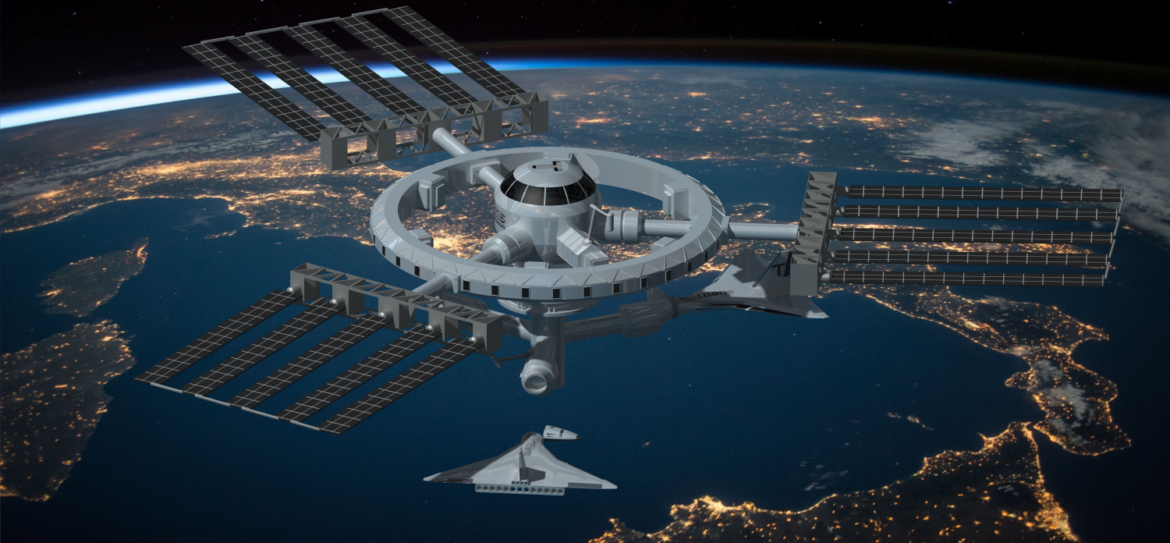
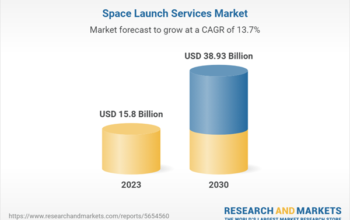
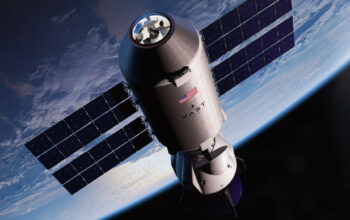

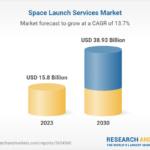

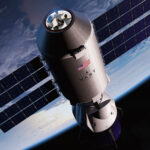
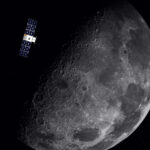




One thought on “Critical Analysis of Rocket Launch Systems, and Predictions for Spaceplanes, Spaceships, and Spacecraft”